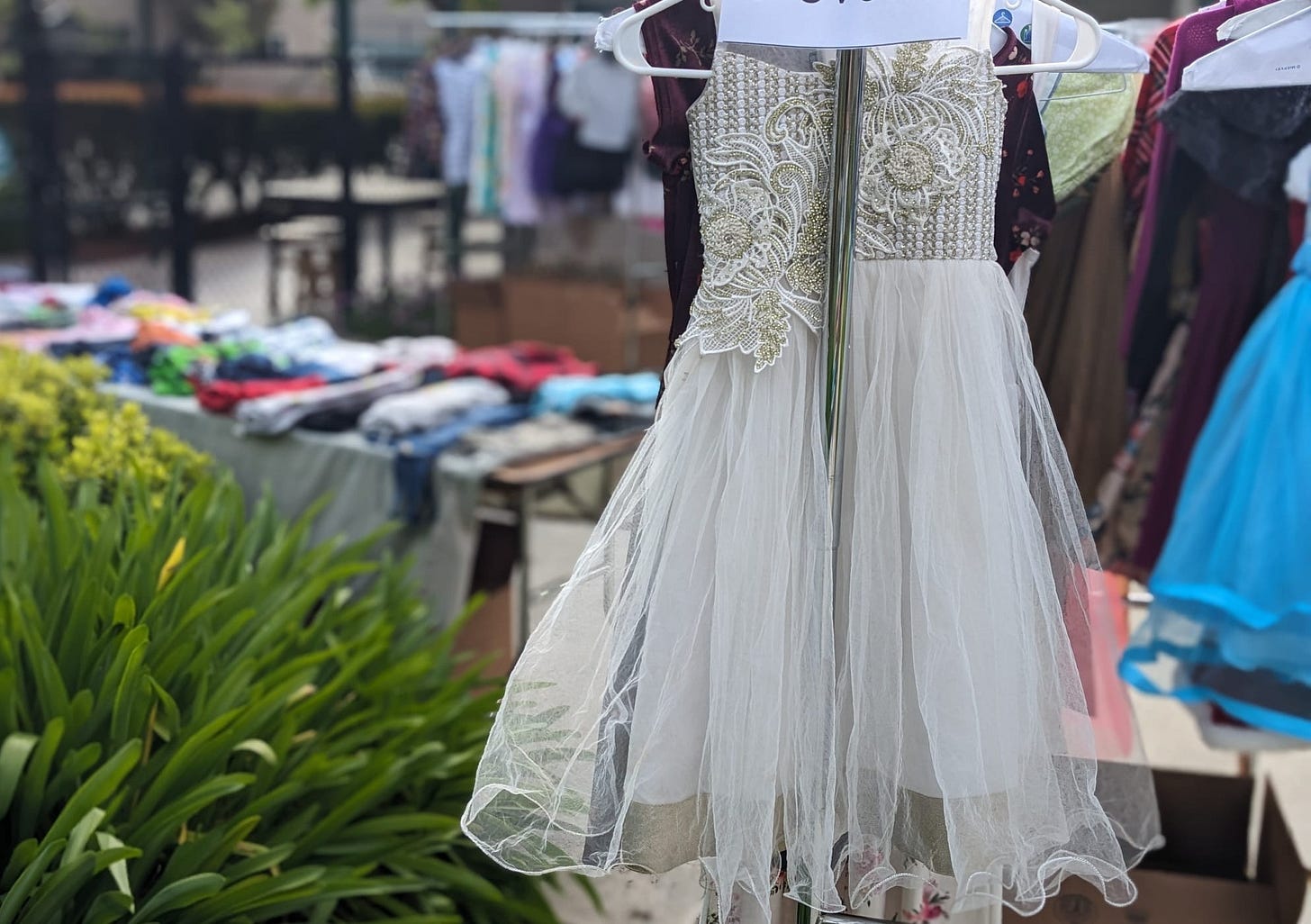Embracing Circular Consumption through Community Swaps
Worn once, Loved twice. The making of a circular micro-economy.
Clothing swap or exchange is not a donation drive, and it’s not second-hand shopping. It’s about giving forward and accepting items for use, within a community. No selling, No bargaining. A clothing swap is an effective way to slow down our linear consumption model by introducing circular consumption patterns. It creates space for reuse, right where we live.
Interested in bringing clothing swap to your community?
KaizenLife supports communities in running simple, effective clothing swaps.
Please Join the Waitlist, and read on.
I have participated in several clothing swaps as a volunteer, a parent and a clothing swap event organizer. I’ve witnessed the joy of finding a new favorite shirt. I’ve helped fold and label piles of gently used clothings. I’ve stood at the end of a swap wondering how we still ended up with no takers for a perfectly good outfit.
It’s all part of the learning. Over time, clothing swap has become one of the most meaningful ways I’ve experienced mindful consumption.
Why Clothing Swaps Matter
Most of us (non-minimalists!) know how quickly clothes pile up, creating little landfills inside our closets. But behind every garment is a footprint — cotton or polyester to make it, water to dye it, fuel to ship it. Perhaps the biggest cost is the ignored, enormous, unseen cost of throwing it away. In the U.S., about 85% of all textiles end up in landfills or are incinerated — billions of pounds every year. (Have you seen the Atacama Desert in Chile? Or the beaches of Ghana?)
Donation sounds like a solution — and yes, it’s a step forward. But has it become our excuse to buy more? Many donation centers are able to use only around 20% of what they receive. The sheer volume means the rest is often exported to the ‘Global South’ that overwhelms developing and underserved communities disproportionately, or are sent to landfills. Many organizations that once accepted ethnic wear have had to pause or close, unable to manage the overflow of clothes.
How a Clothing Swap Works
It’s simple:
People contribute cleaned, good-condition clothes they no longer use.
People browse the rest of the collection and pick what they’d like to use.
And surprisingly, swaps aren’t about getting more. They’re about finding something truly useful — a prom dress, a warm winter layer, a shirt for the growing teen at home.
Is My Item Ready to enter a Clothing Swap?
Kids outgrow clothes. Festive outfits get worn once. Styles change. Interests shift.
Has it been sitting unused for a while?
Have I skipped it over every time?
Does it no longer fit my lifestyle?
Has my child has outgrown it?
Will I realistically wear it again?
Would I be glad if someone else found value in this item?
If the answer is Yes to any of the above, it is ready.
Where Clothing Swap Works Well
Swaps thrive in communities with awareness, shared values, and a willingness to experiment. Clothing swaps aren’t just about clothes. They’re about:
Practicing mindfulness
Saving hard-earned money
Building stronger, more connected communities
And the environmental benefits of clothing swaps for our future? A nice bonus.. wouldn’t you agree?




Showcasing the latest school event during Earth Week: https://www.youtube.com/watch?v=b5TIF3m6IDw